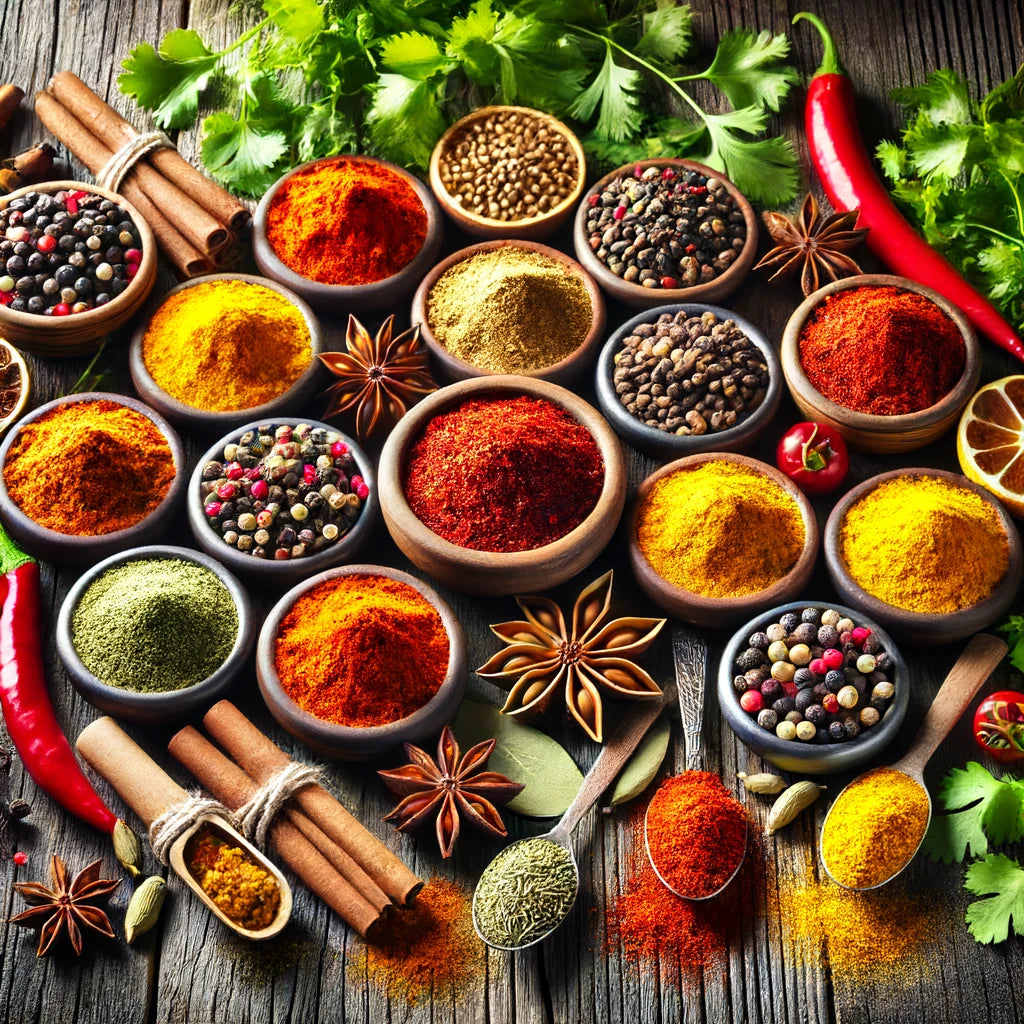The overall taste of a dish largely depends on the combination of spices used in its creation. Understanding different flavor profiles and the art of balancing and amplifying these flavors is what makes cooking an art. It's essential to know how to combine and balance these flavors to make a dish taste delicious.
Complementary spices can do wonders for our cooking. But first, let's understand what we mean by flavor profiles and complementary spice profiles.
Understanding Flavor Profiles
A "flavor profile" refers to a unique combination of aroma, taste, and mouthfeel that defines a particular dish or food. It encompasses the overall sensory attributes and taste characteristics of a dish. Understanding different flavor profiles is vital for creating balanced and harmonious dishes.
Here are the key elements and examples of flavor profiles to help you understand them better:
- Basic Tastes: Sweet, sour, salty, bitter, and umami.
- Aromas: Fruity, spicy, herbal, floral, and smoky.
- Textures: Crunchy, creamy, tender, chewy, and crispy.
Importance of Flavor Profiles
Understanding and utilizing spice profiles is a fundamental skill in cooking that can significantly impact the flavor, health benefits, and cultural authenticity of dishes. Here are various reasons why spice profiles are important:
- Enhancing Flavor: Flavor profiles add layers of complexity and depth to dishes, making them more enjoyable and interesting. They help create a right balance of taste.
- Cultural Significance: Spice profiles are integral to the identity of different cuisines around the world. They reflect the culture, traditions, history, and geography of a particular region, maintaining the authenticity of dishes and preserving cultural heritage.
- Supporting Culinary Creativity: Understanding flavor profiles allows chefs and home cooks to experiment and create new recipes. It gives them the opportunity to tailor dishes to personal taste preferences and dietary needs.
- Adding Aromatic Appeal: Flavor profiles are responsible for an overall sensory experience. Just the smell of spices can enhance appetite and enjoyment.
- Masking Unpleasant Flavors: Flavor profiles can mask unpleasant flavors in certain recipes, making them more palatable.
Different Techniques to Create Balanced Flavor Profiles
Here are some interesting ideas to create balanced profiles and elevate the overall experience of your dishes:
- Contrast and Complement: Combine contrasting flavors (e.g., sweet and sour) for balance, and complementing flavors (e.g., sweet and creamy) for harmony.
- Layering Flavors: Build flavors by adding ingredients at different stages of cooking to create depth and complexity.
- Taste as You Cook: Continuously taste your dish as you cook to adjust seasoning and balance the flavor profile.
- Use Fresh Ingredients: Use fresh, high-quality ingredients to ensure the best flavor.
Understanding and using balanced flavor profiles can elevate your cooking. Spice Profile offers a collection of top-grade spices, rich in aroma and taste, to help you create balanced flavor profiles and delicious dishes.
Understanding Complementing Spice Profiles
Complementing spice profiles refer to the harmonious blending of different spices to enhance the overall flavor of a dish. When combined thoughtfully, spices can balance and amplify each other's flavors, creating a more complex and enjoyable taste experience.
How to Create Complementing Spice Profiles
To create complementing spice profiles, it is important to understand the individual characteristics of the spices and how they interact to enhance the overall flavor of a dish.
Here are a few steps to guide you in creating complementing spice profiles using your creative cooking skills:
- Understand the Characteristics of Spices: Start by understanding the aromatics, base flavors, heat, sweetness, and bitterness of the spices you plan to use.
- Select a Theme or Cuisine: Depending on the type of cuisine or dish you wish to create, your choice of spices will change.
- Balance the Flavors: Balance the heat and sweetness in your dish. Contrast bitter and sweet flavors, and layer aromatics by using a combination of aromatic spices to create a complex base.
- Decide the Ratio: Start with small quantities of each spice and adjust them as per your preference. Keep tasting and tweaking until you have the desired balance of flavors.
Easy Tips for Creating Complementing Spice Profiles
Here are some quick tips to help you master the art of creating complementing spice profiles:
- Start simple with a few spices and gradually add more.
- Keep track of the spices, their quantities, and adjustments you make at each step.
- Continuously taste and adjust the ratios.
We offer a wonderful range of premium quality spices that you can use in your cooking to create harmonious, balanced, and flavorful recipes. Rich in flavors and aroma, spices at Spice Profile encourage you to experiment with your culinary skills and create mouthwatering dishes.

